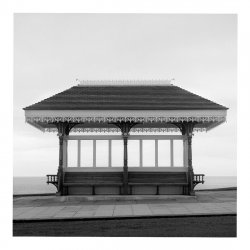Ian, don't let Multigrade filters faze you. They work according to a set of rules. You just need to find out what these rules are. A simple exercise will reveal all! This is best done when you have just made a nice print on a middle filter grade.
Let us assume that you have just made a reasonably nice print with details in the highlights and shadows and perhaps small areas of full black and paper white. It was a straight print - with no burning-in or dodging- at 10 seconds on Grade 3.
Begin by swapping the filter for a Grade 2, and make another 10 second print. Now compare it to your grade 3 print. Be systematic. Look first at the highlights, then the shadows. You will see that the highlights have gone darker, and maybe there is no longer any paper white. But the shadows have gone lighter than they were, and maybe there is no longer any full black.
Now swap for a Grade 1 filter, and make another 10 second print. The highlights have gone even darker now, and the shadows even lighter.
Now swap for a Grade 0 filter and make another 1 second print. The progression continues. Even duller highlights, and shadow areas much lighter than they were on the Grade 3 print.
Now go the other way. Swap for a Grade 4 filter. Now you will have to double the exposure to 20 seconds, to stay consistent. Compare the highlights with the Grade 3 print. Slightly paler, with more paper white. Now look at the shadows. Slightly darker than on the Grade 3 print, with less detail and more full black.
Now switch to a Grade 5 filter and make a 20 second print. The highlights have gone to white paper now . The shadows are even darker than they were with more full black.
Wash and dry the prints and spread them out in order from 0 to 5. The progressive changes will be obvious now. The Grade 0 print will have a limited tonal range, from darkish grey to light grey, with all the separate tones compressed, and will look very dull. The Grade 5 end of the scale will look completely different. All the tones will have been stretched out, and the upper tones lost to blank white, and the lower tones lost to full black.
Now for the best bit, which will teach you something really useful when making future prints. LOOK AT THE MID-TONES. Find something in one of the prints that has a certain mid-tone. Now look at that same thing in all the other prints. They all have the same tone! You may have to seek it out, but once you find it, it will be obvious. For a same given print exposure the mid-tone doesn't change across the grades. It stays the same from Grade 0 right through to Grade 5. A Grade 0 filter compresses the upper tones down to this mid-tone, and compressed the lower tones up to it. On the other hand, a Grade 5 filter does the opposite. It stretches the upper tones up and away from the mid-tone, and stretches the lower tones downwards and away from the mid-tone.
This exercise doesn't take long to do, and will show you a lot about how filters work. If you have room in the darkroom you can pin the prints up and they will show you the way forwards when you have a test strip in your hand and are unsure about what to do next.
Alan


